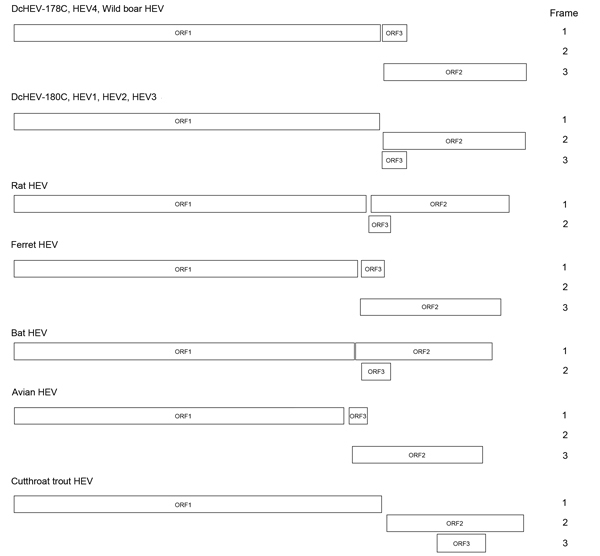Volume 20, Number 6—June 2014
Dispatch
New Hepatitis E Virus Genotype in Camels, the Middle East
Figure 1

Figure 1. Predicted genomic organization of hepatitis E virus (HEV) from dromedary camel (DcHEV) and other HEVs, considering the reading frame of open reading frame (ORF) 1 as frame 1.
1These authors contributed equally to this article.
Page created: May 16, 2014
Page updated: May 16, 2014
Page reviewed: May 16, 2014
The conclusions, findings, and opinions expressed by authors contributing to this journal do not necessarily reflect the official position of the U.S. Department of Health and Human Services, the Public Health Service, the Centers for Disease Control and Prevention, or the authors' affiliated institutions. Use of trade names is for identification only and does not imply endorsement by any of the groups named above.